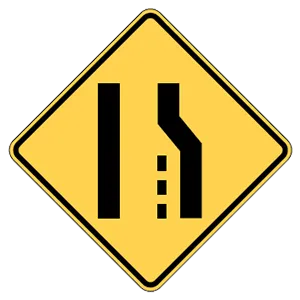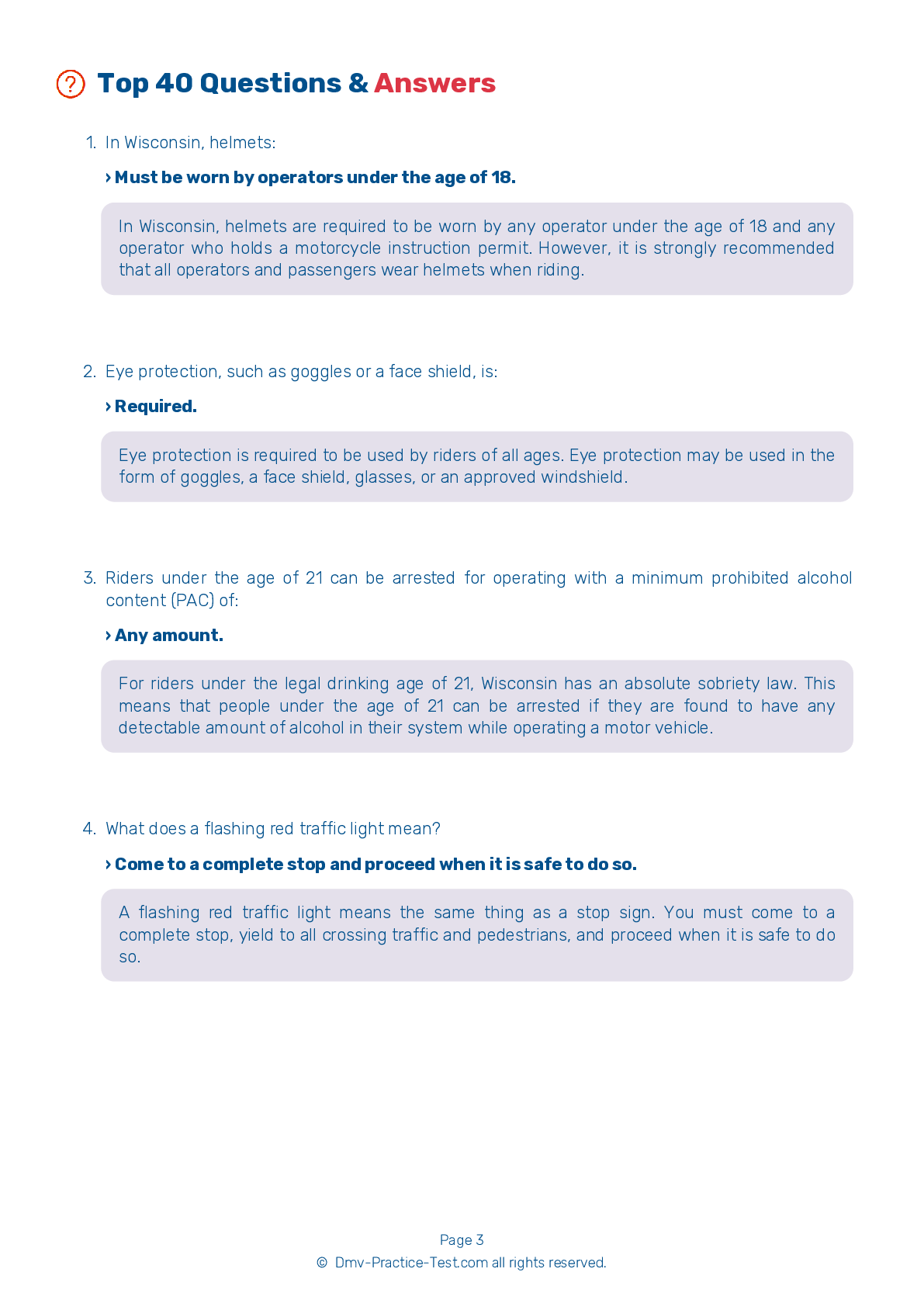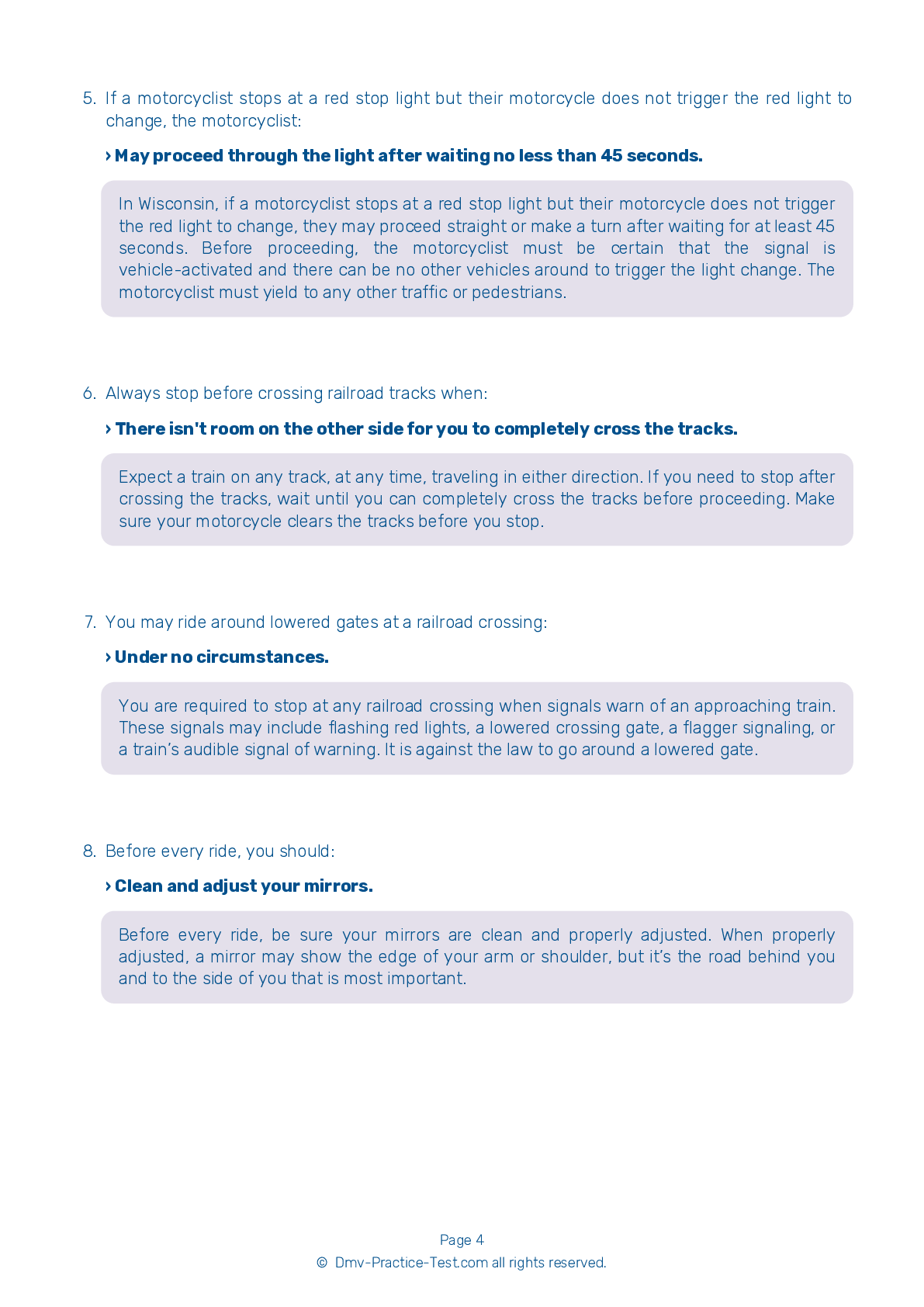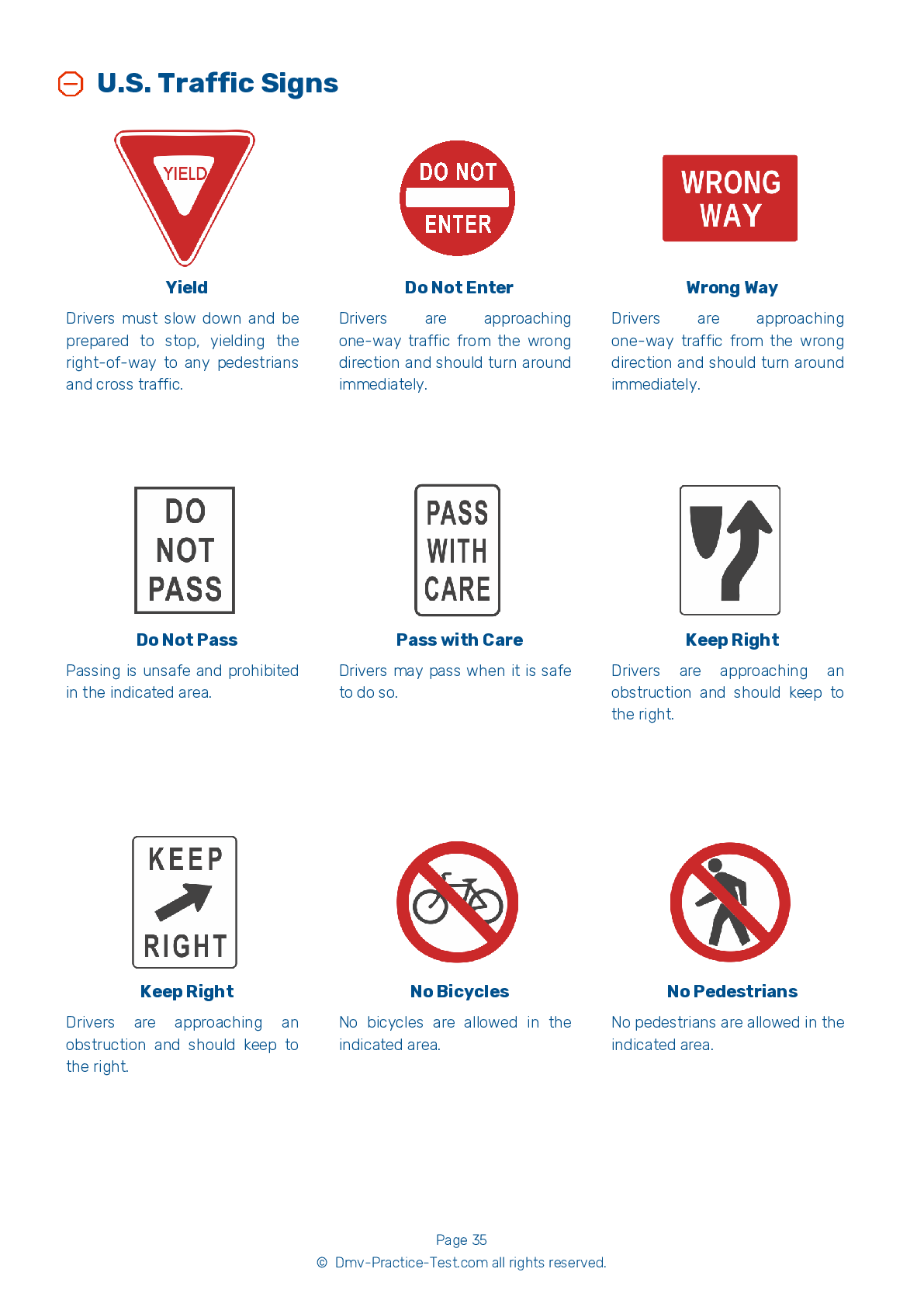DMV Permit Test #11
Motorcycle Test | License WI 2025 | FREE Online Practice! #11 Page 4 of 5
Take this FREE motorcycle test (license in WI 2025) to check your knowledge of the road rules. To improve your results, download a motorcycle handbook online, study theory, and practice for free on our website. Still worried about how to get a motorcycle license in Wisconsin in 2025? Check our website for more sample tests, train as much as possible, and boost your grades!
40
35
16
25 . If the chain or belt of your motorcycle breaks, you will:
Experience a sudden increase in power to the front wheel.
If your drive chain or belt fails, you will experience an immediate loss of power to the rear wheel.
26 . A red and white triangular sign at an intersection means:
Slow down and be prepared to stop if necessary.
A triangular red and white yield sign means that you must decrease speed as you approach an intersection and yield the right-of-way to any vehicles or pedestrians in the intersection. You must be prepared to stop if conditions require it.
27 . When riding a motorcycle:
You should try to keep your feet away from the controls.
To maintain proper balance, your feet should be placed firmly on the footrests and not dragged on the ground. Do not point your toes downward, as this may cause them to catch on the road. Keep your feet near the controls so you can reach them quickly, if needed.
28 . This road sign means:

Warning signs provide notice to road users of a situation that might not be readily apparent and are usually yellow with black markings. This sign alerts drivers to the right lane ending and tells them to prepare for potential merging traffic.
29 . When being passed, you should not move to the portion of the lane farthest from the passing driver because it:
Encourages other drivers to pass you.
Moving into the portion of your lane farthest from a passing vehicle is potentially dangerous because it could encourage the driver to return to your lane before it is safe to do so. It is safest to stay in the center of a lane when being passed.
30 . Taking a turn too fast:
Can cause you to end up in another lane or leave the road.
Taking a turn too fast is dangerous. If you cannot hold the turn, you may end up turning into another lane or even off of the road entirely. Use caution when taking a turn.
31 . When riding with a passenger on your motorcycle, you should instruct the passenger to:
Tell passengers to avoid unnecessary conversation or movement while on a moving motorcycle. Passengers should get onto a motorcycle only after the engine is started. They should sit as far forward as possible without crowding the operator.
32 . If you are feeling tired while riding, you should:
Get off the road and rest.
You should avoid riding if you are tired. When making a long trip, take rest breaks at least every two hours to reduce the risk of becoming fatigued.
2025 Wisconsin | Frequently Asked Questions
To get a motorcycle license in Wisconsin, you must first obtain a motorcycle instruction permit by passing a written test. After practicing with the permit for at least 30 days, you can take a skills test to get your motorcycle license. Alternatively, completion of a Wisconsin Motorcycle Safety Program course can waive the skills test requirement. Applicants must be at least 16 and have parental consent if under 18.
In Wisconsin, the minimum age for obtaining a motorcycle driver's license is 16. However, riders under 18 must also complete a basic motorcycle rider course approved by the Department of Transportation and hold a motorcycle instruction permit for at least six months before obtaining the license. Parental consent is also required for riders under 18.
Yes, in Wisconsin, you need a dedicated motorcycle license or a motorcycle endorsement on your regular driver's license to legally ride a motorcycle. This typically involves passing a written test and a skills test. If you don't have a motorcycle license, you could face penalties such as fines or even suspension of your driving privileges.
To apply for a motorcycle license in Wisconsin, you'll need to provide proof of your name and date of birth (like a valid passport or birth certificate), proof of identity (like a valid driver's license), proof of Wisconsin residency (like a utility bill or lease agreement), and your social security number. If you're under 18, parental consent is also required. Always check with WisDOT for the most current requirements.
Yes, in Wisconsin, you will need to take a written exam for your motorcycle license. The exam covers various topics such as motorcycle operation, safety rules, handling dangerous surfaces, carrying passengers and cargo, and group riding. The test ensures you understand the rules and safety measures necessary for operating a motorcycle. However, completing a Basic Rider Course can waive this requirement.
The motorcycle written test in Wisconsin covers a variety of topics related to motorcycle operation and safety. This includes understanding traffic signs and signals, rules of the road, safe riding techniques, handling dangerous surfaces, carrying passengers or cargo, and dealing with mechanical problems. All this information can be found in the Wisconsin Motorcyclists' Handbook.
Yes, in Wisconsin, you can substitute the written test with a motorcycle training course. If you successfully complete a Wisconsin Motorcycle Safety Program Basic Rider Course, the skills test and the written test may be waived when applying for your motorcycle license at the Wisconsin Department of Transportation (WisDOT). Always check with WisDOT for current rules and regulations.
To enroll in a motorcycle training course in Wisconsin, first find a state-approved program such as the Wisconsin Motorcycle Safety Program. Register either online or by phone, depending on the program's process. The course typically includes classroom instruction and hands-on training. Completion of the course often allows you to bypass the DMV's skills test for motorcycle licensure.
No, you don't have to own the motorcycle you use for the Wisconsin license test. However, the motorcycle you use must be street-legal, properly insured, and registered. If the motorcycle isn't registered in your name, you'll need written permission from the owner to use it for the test. It must also meet all Department of Transportation requirements.
Yes, you can use a friend's motorcycle for your Wisconsin driver's license evaluation. However, the motorcycle must be street-legal, registered, and insured. Also, you must have written permission from the owner if the motorcycle is not registered in your name. Be sure to comply with all Wisconsin Department of Transportation rules and regulations during the test.
Yes, during the Wisconsin motorcycle driving exam, specific handling skills are tested. These include starting and stopping, turning and swerving, and quick stops. The test also assesses your ability to balance at low speeds, make normal and fast stops, and execute normal and sharp turns. These skills ensure you can safely operate a motorcycle on the state's roads.
Yes, new motorcycle drivers in Wisconsin who are issued an instructional permit are subject to certain limitations. They're not allowed to carry passengers, ride at night, or ride on any expressway or freeway. These restrictions are lifted once the rider successfully completes a motorcycle driving test and receives a full motorcycle endorsement.
Yes, your Wisconsin motorcycle license or endorsement allows you to operate a motorcycle in other states. However, you must abide by the traffic laws of each state you're in. It's also important to note that some states have helmet laws that may differ from Wisconsin's, so be sure to check those before riding out of state.
In Wisconsin, helmet laws are age-specific. All riders under the age of 18 and those with a learner's permit, regardless of age, are required to wear a helmet. However, adult riders over 18 are not legally required to wear a helmet. Despite this, it's recommended for safety reasons to always wear a helmet when operating a motorcycle.
In Wisconsin, there are two types of motorcycle licenses: a motorcycle-only license and a motorcycle endorsement. The motorcycle-only license allows you to operate only a motorcycle. A motorcycle endorsement can be added to a regular driver's license, permitting you to drive both cars and motorcycles. Both require passing written and skills tests.
Yes, in Wisconsin, you can add supplementary endorsements to your motorcycle license. These might include a commercial driver's license (CDL) or a school bus endorsement. Each endorsement requires additional testing and fees. Be sure to check with your local DMV or the Wisconsin Department of Transportation for specific details and requirements.
Yes, the Wisconsin Department of Transportation provides the motorcycle license test in several languages other than English. These include Spanish, Chinese, Polish, Russian, and more. It's advised to contact your local DMV service center beforehand to confirm the availability of the test in your preferred language.
A successful strategy to prepare for the Wisconsin motorcycle license test includes studying the Wisconsin Motorcyclists' Handbook thoroughly, taking practice tests available online or through DMV-approved apps, and understanding all road signs and signals. Additionally, gaining practical experience through a motorcycle safety course can be very beneficial.
Yes, the Wisconsin Department of Transportation offers the motorcycle written exam in multiple languages other than English. These include Spanish, Chinese, Polish, Russian, among others. However, it's recommended to contact your local DMV service center in advance to confirm the availability of the test in your preferred language.
If you fail the motorcycle written test in Wisconsin, you are allowed to retake it. However, you must wait one day before attempting the test again. It's important to review the Wisconsin Motorcyclists' Handbook and understand the concepts before retaking the test. There may be a re-examination fee depending on how many times you've failed the test.



